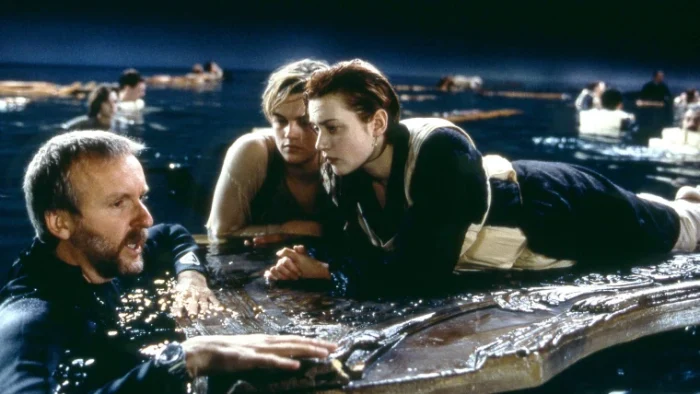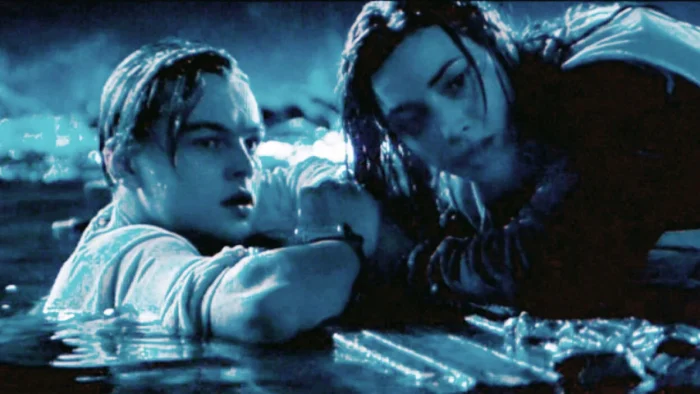For more than twenty-five years, one cinematic question has refused to die: could Jack Dawson have survived the Titanic? What started as a casual fan debate over a floating door has turned into a global fascination, mixing science, emotion, and myth. Even director James Cameron has been drawn into it, testing replicas and defending his script. But the persistence of the question says more about us than about buoyancy. It shows how deeply people wanted Jack to live — and how hard it is to accept that some stories, and some fates, are designed not to end happily.
The Real Science: It Was Never About Space
For years, viewers insisted there was enough room on that makeshift raft for two. Technically, they were right — but physics doesn’t care about space; it cares about weight. The question was never could they fit, but could it float. According to Archimedes’ principle, the wooden panel could only displace a certain amount of water before sinking. Add Jack’s body to Rose’s, and the total weight would exceed the raft’s buoyant force.
James Cameron later confirmed that the prop was deliberately designed to support one person only. In his words, he spent days in a tank “getting it exactly buoyant enough for one.” In other words, the scene wasn’t a mistake — it was engineered that way.

The Cold Truth: The Human Body Had No Chance
Even if the raft had held them both, the water would not. The North Atlantic that night was around –2°C — colder than ice. In such conditions, survival time for a fully immersed person is measured in minutes, not hours. Within three minutes comes cold shock: gasping, hyperventilation, and often cardiac arrest. Within ten, muscles stop obeying the brain. By half an hour, most people lose consciousness.
Jack’s body was almost entirely submerged. He wouldn’t have been thinking about strategy or balance — his limbs would have gone numb, his coordination gone. Rose, mostly out of the water, barely survived herself. The physics of the sea and the limits of the human body left no room for a miracle.
When Science Tried to Save Jack
In 2012, MythBusters tested the famous scene and claimed both could have survived — if they had tied Rose’s life jacket under the raft to increase buoyancy. On paper, it worked. In real life, it wouldn’t have. Removing a jacket, diving beneath the debris, and fastening it underwater in subzero conditions would have been physically impossible within minutes of immersion.
A decade later, James Cameron repeated the test for his documentary Titanic: 25 Years Later. This time, stunt performers matched to the actors’ size and body temperature data were used. The verdict was brutal: only one person could have survived. Cameron summed it up simply — “There was no way they both could have lived.” Science, it turned out, agreed with the script.
What History Tells Us
Real Titanic survivors confirm how unforgiving that night was. Out of roughly 1,500 people who fell into the freezing water, only a handful were pulled out alive — all of them clinging to large pieces of wreckage or overturned lifeboats.
The ship’s chief baker, Charles Joughin, famously survived nearly two hours in the water, likely because he was lightly dressed, had been drinking, and eventually found an upturned lifeboat to climb onto. Others who made it did so in groups, balancing on larger debris.
Jack, by contrast, was alone, with nothing but a small wooden panel already near its limit. History offers no precedent for someone surviving in his exact situation. The sea was as merciless as the story itself.
Why Jack Had to Die
James Cameron has said it countless times: Jack’s death wasn’t an accident — it was written that way. “It says on page 147 that Jack dies,” he once told interviewers. The story was never meant to be about survival. It was about love, sacrifice, and the cost of being alive.
Jack’s death gives meaning to Rose’s life. When we see her as an old woman, we understand that his final act — letting go — became the reason she lived. Had he survived, the film’s tragic beauty would have collapsed into something ordinary. The heartbreak was the point.


